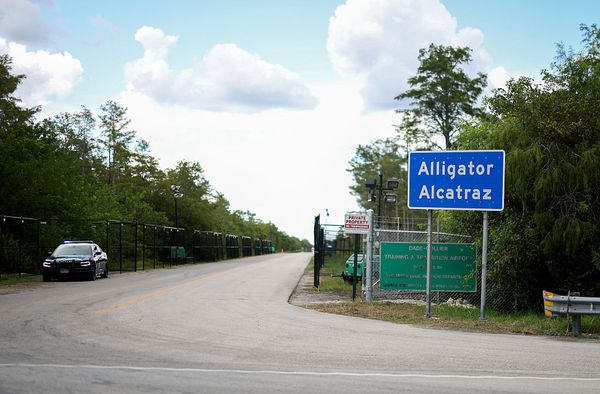Parents love encouraging curiosity and creativity, but not all educational toys are as safe as they appear. Some DIY science kits marketed as fun and educational experiments may contain toxic ingredients that pose health risks to kids. Understanding which kits to avoid can protect your child from exposure to harmful substances while still fostering their love for science. This list highlights common kits that experts have flagged for safety concerns, helping parents make informed choices. Before adding another kit to your cart, here’s what you need to know about potential dangers hiding inside the box.
1. Slime Kits with Borax-Based Solutions
Many DIY slime kits include borax or boric acid as a key ingredient to create the gooey texture kids love. While these chemicals are effective for making slime, they can cause skin irritation, burns, or even poisoning if accidentally ingested. Toxic ingredients like these are particularly dangerous because children often play with slime for extended periods, increasing exposure risk. Some kits lack proper safety instructions or protective gear like gloves. Opting for borax-free slime kits or making your own with safe household items can reduce potential hazards.
2. Crystal Growing Kits with Heavy Metals
Crystal growing kits are marketed as magical ways for kids to see science in action, but some include heavy metals like lead or copper sulfate. These toxic ingredients can cause serious health problems if touched or ingested. Young children, who are naturally curious, might handle the crystals without washing their hands afterward, increasing the risk of accidental ingestion. Exposure to heavy metals can lead to skin irritation, respiratory issues, and long-term health effects. Look for crystal kits labeled non-toxic and certified safe by reputable testing agencies.
3. Volcano Eruption Kits with Corrosive Powders
Classic volcano eruption kits are fun, but certain versions use harsh chemicals to achieve dramatic reactions. These kits can contain corrosive powders like calcium chloride or other reactive agents that can burn skin or eyes on contact. Toxic ingredients in these sets often require adult supervision, yet packaging may misleadingly label them as safe for children. Spills and splashes can cause irritation or injury during experiments. Safer alternatives using baking soda and vinegar can provide the same wow factor without the health risks.
4. Glow-in-the-Dark Science Kits with Phosphorescent Chemicals
Glow-in-the-dark science kits fascinate kids, but the glowing effect often comes from phosphorescent powders that can be toxic if inhaled or swallowed. These substances can cause nausea, dizziness, or respiratory irritation. Many kits lack adequate warnings about keeping powders away from faces and mouths. Because kids frequently touch their faces while playing, accidental ingestion is common. Parents should check for non-toxic certifications or avoid kits containing powders altogether to ensure safer glowing fun.
5. Bath Bomb Kits with Unsafe Fragrances and Dyes
DIY bath bomb kits may seem harmless, but some include fragrances and dyes that contain harmful chemicals. These toxic ingredients can cause allergic reactions, rashes, or even respiratory distress when inhaled. Children often have more sensitive skin than adults, making them particularly vulnerable to these effects. Poor labeling on some kits makes it difficult to know exactly what’s inside. Choosing fragrance-free, natural ingredient kits is a safer option for kids who love fizzy bath creations.
6. Soap-Making Kits with Lye or Caustic Soda
Soap-making sounds like a wholesome activity, but certain kits include lye or caustic soda, both of which are highly corrosive. Direct contact can lead to chemical burns, eye damage, or severe skin irritation. These toxic ingredients are dangerous even for adults if not handled with proper safety gear. Unfortunately, some kits designed for children lack clear instructions or protective equipment. Safer kits that skip harsh chemicals are better suited for young crafters learning about soap science.
7. Tie-Dye Science Kits with Harmful Solvents
Tie-dye kits marketed as science experiments sometimes contain solvents or chemical dyes unsafe for skin contact. These toxic ingredients can cause rashes, eye irritation, or headaches from fumes. Children often play with these kits indoors, which increases exposure risks. Some solvents can also stain or release harmful vapors if used improperly. Non-toxic, plant-based dye kits are a much safer alternative that still delivers bright, colorful results.
8. Chemistry Sets with Unlabeled Chemical Reagents
Traditional chemistry sets can be exciting but risky when they include unmarked or poorly labeled chemicals. These toxic ingredients may be corrosive, flammable, or poisonous if mixed incorrectly. The lack of proper labeling makes it difficult for parents to assess potential hazards. Young experimenters are particularly at risk because they may not understand the dangers of mixing unknown substances. Modern chemistry kits designed specifically for kids often avoid these chemicals and use safe, pre-measured solutions instead.
Choosing Science Kits That Are Truly Safe
Encouraging your child’s interest in science shouldn’t come at the expense of their health. Many DIY science kits contain toxic ingredients that can be harmful with prolonged exposure or accidental ingestion. Always read labels carefully, research brands, and opt for kits certified as non-toxic. Supervision is important, but choosing safer kits from the start eliminates unnecessary risks. Science should inspire curiosity, not cause harm, and safer alternatives can make learning both fun and worry-free.
Have you ever discovered harmful chemicals in a toy or science kit? Share your experiences and tips for safer play in the comments below.
Read More:
5 Dangerous Games That Kids Are Playing When No Adults Are Around
Clothes From Shein and Temu Could Be Hazardous To Your Child’s Health
The post 8 DIY Science Kits That Contain Toxic Ingredients appeared first on Kids Ain't Cheap.








